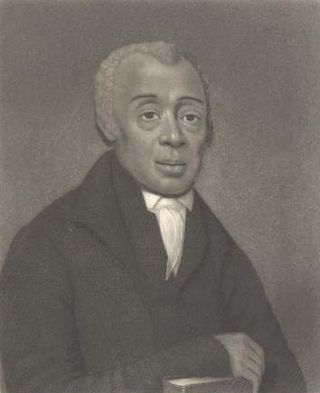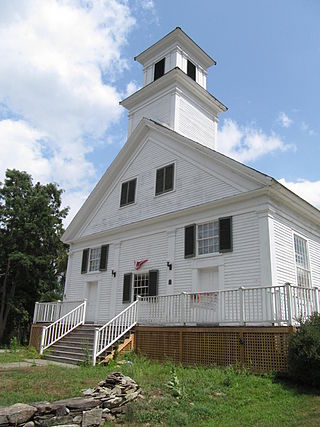
Methodism, also called the Methodist movement, is a group of historically related denominations of Protestant Christianity whose origins, doctrine and practice derive from the life and teachings of John Wesley. George Whitefield and John's brother Charles Wesley were also significant early leaders in the movement. They were named Methodists for "the methodical way in which they carried out their Christian faith". Methodism originated as a revival movement within the 18th century Church of England and became a separate denomination after Wesley's death. The movement spread throughout the British Empire, the United States, and beyond because of vigorous missionary work, today claiming approximately 80 million adherents worldwide.

Francis Asbury was one of the first two bishops of the Methodist Episcopal Church in the United States. During his 45 years in the colonies and the newly independent United States, he devoted his life to ministry, traveling on horseback and by carriage thousands of miles to those living on the frontier.

The Methodist Episcopal Church (MEC) was the oldest and largest Methodist denomination in the United States from its founding in 1784 until 1939. It was also the first religious denomination in the US to organize itself on a national basis. In 1939, the MEC reunited with two breakaway Methodist denominations to form the Methodist Church. In 1968, the Methodist Church merged with the Evangelical United Brethren Church to form the United Methodist Church.

Richard Allen was a minister, educator, writer, and one of America's most active and influential Black leaders. In 1794, he founded the African Methodist Episcopal Church (AME), the first independent Black denomination in the United States. He opened his first AME church in 1794 in Philadelphia.

Richard Whatcoat was the third bishop of the American Methodist Episcopal Church.

The Christmas Conference was an historic founding conference of the newly independent Methodists within the United States held just after the American Revolution at Lovely Lane Chapel in Baltimore, Maryland, in 1784.

Wesley's Chapel is a Methodist church situated in the St Luke's area in the south of the London Borough of Islington. Opened in 1778, it was built under the direction of John Wesley, the founder of the Methodist movement. The site is a place of worship and visitor attraction, incorporating the Museum of Methodism in its crypt and John Wesley's House next to the chapel. The chapel has been called "The Mother Church of World Methodism".

Thomas Coke was the first Methodist bishop. Born in Brecon, Wales, he was ordained as a priest in 1772, but expelled from his Anglican pulpit of South Petherton for being a Methodist. Coke met John Wesley in 1776. He later co-founded Methodism in America and then established the Methodist missions overseas, which in the 19th century spread around the world.

St. George's United Methodist Church, located at the corner of 4th and New Streets, in the Old City neighborhood of Philadelphia, is the oldest Methodist church in continuous use in the United States, beginning in 1769. The congregation was founded in 1767, meeting initially in a sail loft on Dock Street, and in 1769 it purchased the shell of a building which had been erected in 1763 by a German Reformed congregation. At this time, Methodists had not yet broken away from the Anglican Church and the Methodist Episcopal Church was not founded until 1784.

James O'Kelly was an American clergyman during the Second Great Awakening and an important figure in the early history of Methodism in America. He was also known for his outspoken views on abolitionism, penning the strong antislavery work, Essay on Negro Slavery.

Lovely Lane United Methodist Church, formerly known as First Methodist Episcopal Church and earlier founded as Lovely Lane Chapel, is a historic United Methodist church located at Baltimore, Maryland, United States.

The Asbury United Methodist Church is a historic Methodist church on NH 63 in Chesterfield, New Hampshire. It has been termed the "mother church of Methodism in New Hampshire", and is home to the state's oldest continuously running Methodist congregation, organized in 1795. The building, constructed in 1844, is a prominent local example of Greek Revival architecture, and was listed on the National Register of Historic Places in 1983.

Commack United Methodist Church and Cemetery is a historic Methodist church meeting house and cemetery located at 486 Townline Road in Commack, Suffolk County, New York. It was built in 1789 and is a relatively large, two story, two bay shingled building with a broad, overhanging gable roof. It is the oldest Methodist church in New York State in continuous operation. The surrounding burial ground has graves dating to the 18th century.
The Allegheny Wesleyan Methodist Connection (AWMC), originally the Wesleyan Methodist Church (Allegheny Conference), and also known as the Wesleyan Methodist Church (WMC), is a Methodist denomination within the conservative holiness movement primarily based in the United States, with missions in Peru, Ghana, and Haiti.

Barratt Hall, also known as the Philip Barratt House, is a historic home located near Frederica, Kent County, Delaware. It dates to the mid-18th century, and is a two-story, three bay, center-hall plan brick dwelling in the Georgian-style. In 1784, Bishops Thomas Coke and Francis Asbury met in the house with Mrs. Miriam Barratt and eleven preachers. They held council here which ended in sending Freeborn Garrettson to summon preachers to the Christmas Conference in Baltimore, Maryland, at which the Methodist Church in America was organized. It was the home of Philip Barratt, who donated land and, together with Waitman Sipple, erected Barratt's Chapel in 1780.

The history of Methodism in the United States dates back to the mid-18th century with the ministries of early Methodist preachers such as Laurence Coughlan and Robert Strawbridge. Following the American Revolution most of the Anglican clergy who had been in America came back to England. John Wesley, the founder of Methodism, sent Thomas Coke to America where he and Francis Asbury founded the Methodist Episcopal Church, which was to later establish itself as the largest denomination in America during the 19th century.

Harry Hosier, better known during his life as "Black Harry", was an African American Methodist preacher during the Second Great Awakening in the early United States. Dr. Benjamin Rush said that, "making allowances for his illiteracy, he was the greatest orator in America". His style was widely influential but he was never formally ordained by the Methodist Episcopal Church or the Rev. Richard Allen's separate African Methodist Episcopal Church in Philadelphia.
The Bible Methodist Connection of Churches is a Methodist denomination within the conservative holiness movement.
James Dempster (1740–1804) was a Methodist clergyman who ministered to members of the Methodist Societies in the American colonies before and during the American Revolution.





















